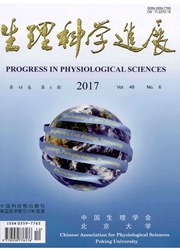

 中文摘要:
中文摘要:
随着老龄化社会的到来,脑缺血的发生率逐年上升。尽管近年来对脑缺血病理生理机制的研究取得了一定的进展,但治疗手段还不十分理想。目前临床研究主要采用血管再通和抑制兴奋性毒性来改善中风,但由于溶栓治疗时间窗窄(3小时),存在出血以及缺血/再灌注损伤的风险,限制了其在临床上的应用。尽管抑制兴奋性毒性在动物实验研究中取得了一定的进展,但由于兴奋性毒性持续的时间较短等原因临床上并未显示出任何疗效。然而近年来研究表明脑缺血后程序性的细胞死亡可持续数小时到数天,从转化医学角度来讲,是更为合理的治疗靶点。本文将对中风后细胞死亡/存活信号通路的研究现状进行回顾,并对潜在的治疗靶点进行探讨,以期为脑缺血的临床治疗提供新的理论依据。
 英文摘要:
英文摘要:
In an aging society, the incidence of brain ischemia increases dramatically. Despite progress in pathophysiology mechanisms, the medical therapy for brain ischemia has not been satisfactory. Reca- nalization using tissue plasminogen activator only modestly improves patient outcome, and inhibiting exci- totoxicity has shown no clinical benefit. Both do not provide an adequate time window for effective stroke therapy in clinical practice. A more reasonable therapeutic window, and hence a greater potential for clin- ical success, is likely to be attained by placing emphasis on ameliorating the effects of the synergistic processes of programmed cell death (PCD) that is active for hours to days after ischemia. It is necessary to identify molecular mediators of ischemic neuroprotection suitable for translation to human clinical tri- als. In this review, the mechanisms of cell death/survival signaling pathways after ischemia and the po- tential therapeutic targets will be discussed.
 同期刊论文项目
同期刊论文项目
 同项目期刊论文
同项目期刊论文
 期刊信息
期刊信息
